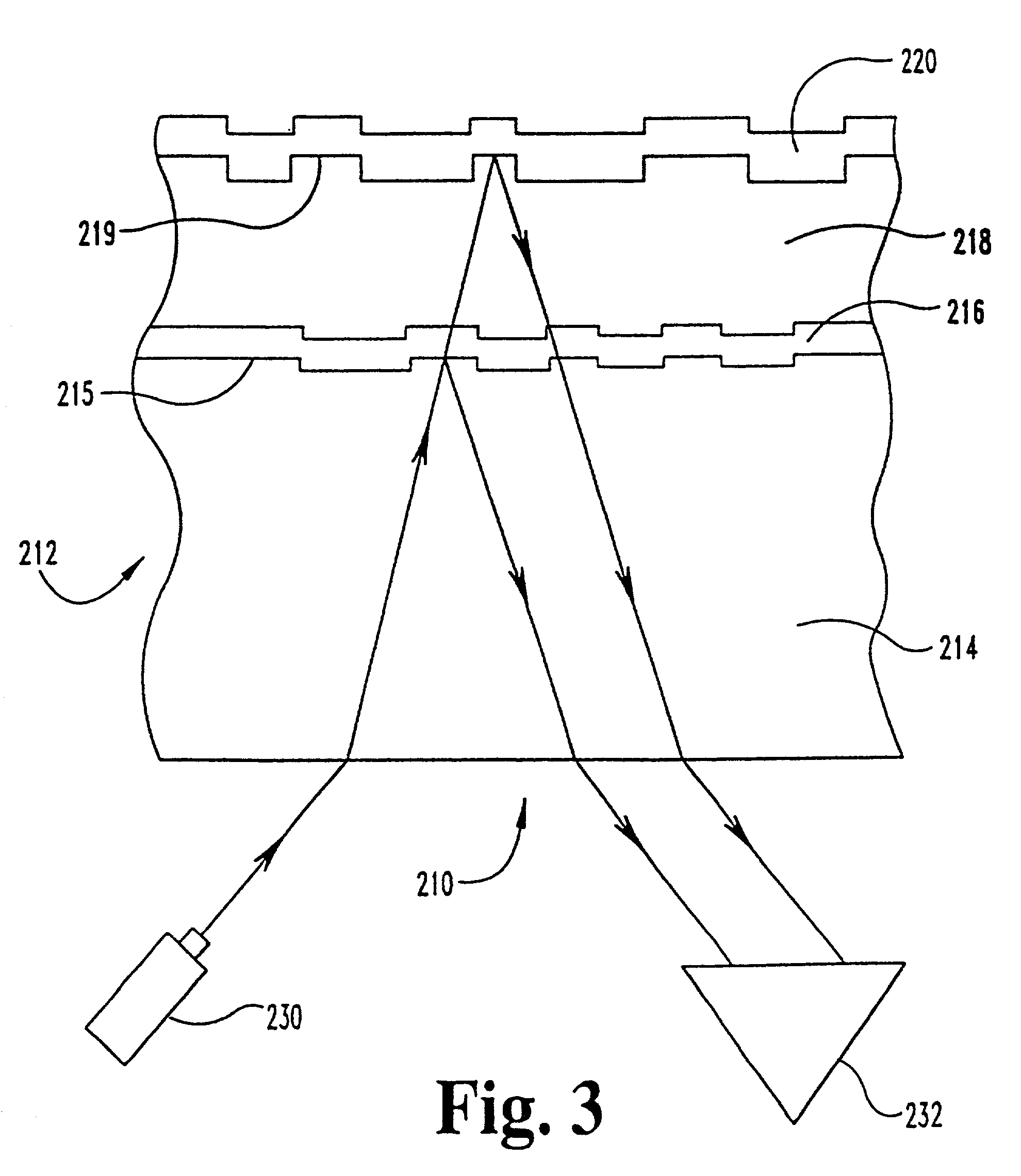Metal alloys for the reflective or the semi-reflective layer of an optical storage medium
- Summary
- Abstract
- Description
- Claims
- Application Information
AI Technical Summary
Benefits of technology
Problems solved by technology
Method used
Image
Examples
second embodiment
[0055] In a second embodiment, the copper is alloyed with a comparatively small amount of cadmium, which is an oxide former and an oxygen scavenger that will improve the oxidation resistance of copper while having a low impact on reflectivity. In this embodiment, the relationship between the amount of cadmium and copper ranges from about 0.01 a / o percent (atomic percent) to about 15 a / o percent cadmium and from about 85 a / o percent to about 99.99 a / o percent copper.
[0056] The solubility limits of cadmium in copper at 500.degree. C. and 300.degree. C. are respectively about 1.40 and 0.50 a / o percent. And at the eutectic temperature of copper and cadmium, the maximum solubility of cadmium in copper is approximately 2.14 a / o percent. Thus, for the same reasons as for the copper-silver alloys, it is again desirable to keep the cadmium in a solid solution of copper for use as a sputtering target (an example of which is item 400 shown in FIGS. 7 and 8). As a result, it is another embodime...
third embodiment
[0057] In a third embodiment, the copper is alloyed with a comparatively small amount of gold. Gold is a noble metal, and will increase the corrosion resistance of copper. Gold is isomorphous with copper and can be added in any proportion to copper and still keep the copper-gold alloy a single phase; thus gold's addition to copper as an alloying element is theoretically unlimited and only limited in practice by the ultimate cost of the alloy. In this embodiment, the relationship between the amount of gold and copper ranges from about 0.01 a / o percent (atomic percent) to about 30 a / o percent gold, and from about 70 a / o percent to about 99.99 a / o percent copper. But preferably, in respect to each metal, this alloy has from about 0.1 a / o percent to about 5.0 a / o percent gold and from 95 a / o percent to about 99.9 a / o percent copper.
fourth embodiment
[0058] In a fourth embodiment, the copper is alloyed with a comparatively small amount of magnesium. In this embodiment, the relationship between the amount of magnesium and copper ranges from about 0.01 a / o percent (atomic percent) to about 10 a / o percent magnesium and from about 90 a / o percent to about 99.99 a / o percent copper. But preferably, in respect to each metal, this alloy has from about 0.10 a / o percent to about 5.0 a / o percent magnesium and from about 95 a / o percent to about 99.1 a / o percent copper. Similar to cadmium, magnesium is also a strong oxide former and oxygen scavenger, and is, therefore, capable of reacting with any residual oxygen in copper to form magnesium oxide.
PUM
| Property | Measurement | Unit |
|---|---|---|
| Mass | aaaaa | aaaaa |
Abstract
Description
Claims
Application Information
 Login to View More
Login to View More - R&D
- Intellectual Property
- Life Sciences
- Materials
- Tech Scout
- Unparalleled Data Quality
- Higher Quality Content
- 60% Fewer Hallucinations
Browse by: Latest US Patents, China's latest patents, Technical Efficacy Thesaurus, Application Domain, Technology Topic, Popular Technical Reports.
© 2025 PatSnap. All rights reserved.Legal|Privacy policy|Modern Slavery Act Transparency Statement|Sitemap|About US| Contact US: help@patsnap.com



